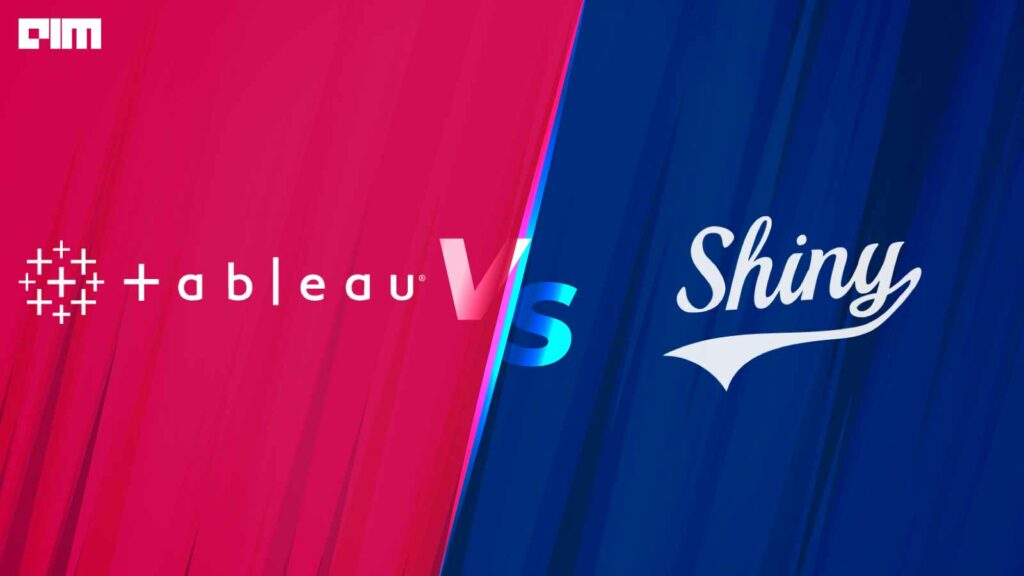Business intelligence (BI) tools are becoming extremely popular as businesses increasingly rely on data and numbers to determine their performance, analyse processes and figure out actionable insights, dashboarding or data visualisation. These tools help businesses extract actionable insights from data to help them make informed decisions.
According to Markets and Markets, the global visualisation tools market is presently valued at $5.9 billion. The market is expected to grow at a CAGR of 11.6 per cent to reach $10.2 billion by 2026.
Some of the most popular BI tools include Microsoft Power BI, Tableau, Google Data Studio, Shiny, and HubSpot. While the usage of all these tools depends on various factors, here is a quick comparison of Tableau and Shiny.
Tableau
Founded in 2003 by Pat Hanrahan, Christian Chabot and Chris Stolte, Tableau is an interactive data visualisation software focused on business intelligence. It is the most established and popular data visualisation tool in the data analysis industry. The paid-for software offers features in a drag-and-drop workflow and is relatively easy to use.
Tableau comes with two options with respect to connecting to data. One can connect to a local file like CSV, Excel, JSON, PDF or Spatial. Or, a user can connect to a remote server. Its latest version — Tableau 2021.3, was released on 7 September this year. Check its latest updates and versions here.
Shiny
Programming language R offers a dashboarding package — Shiny, that helps users create scripts to produce dashboards and host them in web applications. It combines the computational capabilities of R, along with the interactivity of the modern web.
Shiny package in R allows one to host standalone apps on a webpage or embed them in R Markdown documents or build dashboards. Additionally, Shiny apps can be extended with CSS themes, HTML widgets and JavaScript actions.
Flexibility
Tableau offers built-in connections, including Google products — Google Analytics and BigQuery. However, Tableau requires third-party tools to connect with the likes of AdWords and YouTube Analytics.
Shiny can connect with any data source either using a pre-made package or using custom API calls.
User Interface
Tableau’s easy to use drag and drop format allows a natural workflow. It is designed to be intuitive and meant for people with non-technical backgrounds.
On the other hand, Shiny requires one to know the R programming language, which can be challenging for users with no prior experience or knowledge of a similar language. Furthermore, to make a simple chart, the user must write the actual code. The code is not more than a couple of lines and pretty simple and often negligible for developers. However, it can be challenging to non-technical users.
Visualisation
Tableau offers basic data manipulation functions. It allows users to pivot columns, create groups and filter at the source. Additionally, it also offers basic analysis features. Tableau offers a wide range of chart types — bar charts, pie charts, line and area charts and geographical plots, accommodating all dashboarding needs. However, not much can be tweaked in visuals in Tableau. One can change the colours, fonts, aces and titles.
Shiny offers powerful data manipulation or wrangling and analysis tools. It also offers statistical modelling and advanced forecasting packages. Its packages ggplot2 and plot.ly allow one to create visualisations of pretty much everything imaginable. R Shiny, on the other hand, allows a wide range of customisation.
Types of visualisations available with ggplot2 | Source: Graph Gallery
Price
Tableau licenses start from $70 a month when billed annually. R Shiny, on the other hand, is open-sourced and is completely free to use.
While both the products offer good speed and efficient data processing, R Shiny is easier when it comes to repeatability and scalability. In Tableau, when a dashboard is deleted or decommissioned, it has to be created from scratch. In Shiny, on the other hand, one just has to tweak the script to accommodate changes in dashboards with a similar setup. This is because Shiny is based on text, and to reproduce, one just needs to re-run the script. However, to work seamlessly on Shiny, one must learn R. R is relatively easy to learn and offers endless customisation possibilities for Shiny dashboards. Therefore, while Tableau can be quick in prototyping and reporting, Shiny can be used to make a more informed analysis.
To learn more about creating interactive public dashboards and storylines in Tableau, click here.

























